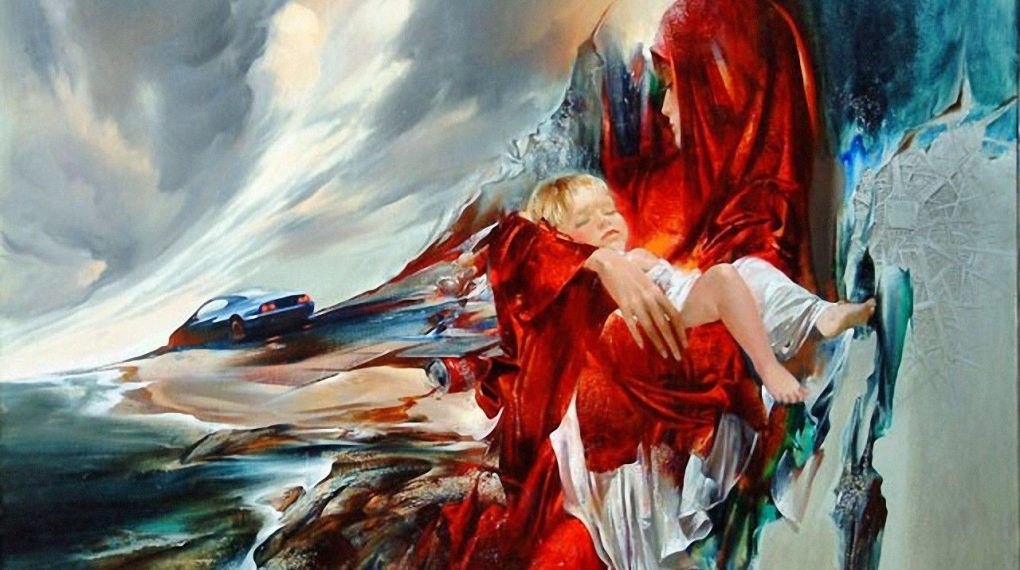Albert Bierstadt’s Art Style and Inspiration

Albert Bierstadt was one of the most celebrated painters of the 19th-century American landscape. His works are renowned for their grandeur, Romanticism, and realism. Bierstadt was an avid traveler, and his trips to the American West heavily influenced his art. The works of Romantic painters like Caspar David Friedrich and John Constable also inspired him.
Bierstadt’s art style is characterized by its sweeping vistas, romantic lighting, and meticulous attention to detail. His works often depicted the awe-inspiring beauty of the American West, such as snow-capped mountains, vast prairies, and majestic rivers. In addition, Bierstadt often incorporated Native American figures into his paintings, depicting the native peoples in a romanticized, idealized fashion.
In addition to his landscapes, Bierstadt also painted seascapes, portraits, and genre scenes.
His Influences
The beauty of the American West and the untamed wilderness in the 19th century heavily inspired Albert Bierstadt. Born in Germany, Bierstadt immigrated to the United States as a child and grew up surrounded by the country’s natural beauty. This early exposure to the American landscape profoundly impacted him, and he developed a deep appreciation for the rugged beauty of the West.
One of the major sources of inspiration for Bierstadt was the Hudson River School of painting, an important art movement in the United States during the mid-19th century. This movement was focused on the beauty of the American landscape, and the artists associated with it, including Bierstadt, sought to capture the grandeur of the country’s natural wonders. Bierstadt was particularly drawn to the stunning landscapes of the American West.
The new opportunities and freedoms also inspired Bierstadt in the American West during the mid-19th century. The expansion of the American frontier was a major theme in the country then, and Bierstadt sought to capture the spirit of adventure and discovery. As a result, Albert Bierstadt’s artworks often feature human figures, such as settlers, hunters, and Native Americans, which contextualize the natural landscape’s beauty and add a sense of scale to his works.
In addition to the American West, Bierstadt was also inspired by his travels to Europe, where he was exposed to the works of great European landscape painters. The work of 17th-century Dutch landscape painter Jacob van Ruisdael mainly influenced Albert Bierstadt’s works. However, the work of European romantic painters, such as J.M.W. Turner, also inspired them.
Albert Bierstadt’s art style was also heavily influenced by his faith. He was a devout Lutheran, and his paintings often featured religious imagery, such as crosses or angels. Bierstadt was also deeply moved by the beauty of nature, which he expressed in his art. He was an ardent conservationist and was passionate about preserving America’s natural beauty.
He was also heavily influenced by his German heritage. Albert Bierstadt’s paintings often contain elements of Romanticism, which was popular in Germany during this period. An emphasis on emotion, nature, and spirituality characterizes Romanticism.
His Artistic Style
Albert Bierstadt’s paintings often feature vast, panoramic landscapes with towering mountains, rolling hills, and sparkling lakes. He was drawn to the rugged beauty of the American West, and many of his works depict the region’s stunning landscapes, including Yosemite Valley, the Rockies, and the Sierra Nevada Mountains.
Bierstadt’s use of light and color in these works is particularly striking, as he used warm, golden hues to evoke the feeling of a brilliant sunset and cool blues to capture the majesty of a clear mountain lake. He also incorporated elements of human activity into his landscapes, such as Native American tepees, hunters, and settlers, adding a sense of scale and context to his works.
Bierstadt’s meticulous attention to detail is another hallmark of his artistic style. He was known for his highly realistic depictions of nature and spent much time researching and observing the landscapes he painted to capture their true essence. This is evident in the intricate details in his works, such as the delicate textures of tree leaves and the rippling patterns of water. He also had a keen eye for composition and balance between the elements in his scenes.
Evidence of his Artistic Style and Inspiration in Some of his Paintings
Bierstadt’s artistic style is evident in his famous paintings, including “The Rocky Mountains, Lander’s Peak”. This Albert Bierstadt art showcases Bierstadt’s ability to capture the grandeur of the American West. The painting depicts Lander’s Peak in the Rockies, surrounded by a rugged landscape.
The warm, golden hues of the sunset add a sense of drama to the scene. The intricate details in the foliage and rock formations demonstrate Bierstadt’s meticulous attention.
In “Yosemite Valley”, we can also witness his amazing style. This artwork is one of the most famous Albert Bierstadt paintings and is a prime example of his romanticized depictions of the American West. The painting depicts the breathtaking beauty of Yosemite Valley, with its towering cliffs, rolling hills, and sparkling waterfalls.
The painting’s color palette is particularly noteworthy, as Bierstadt skillfully incorporated warm, golden hues to convey the brilliance of a sunset, and cool blues to capture the grandeur of the mountain lake. Bierstadt’s masterful use of light and color in this painting highlights his talent for evoking emotion and capturing natural beauty through his carefully chosen color palette.
Conclusion
Bierstadt’s art style and inspiration continue to inspire artists today. These influences shaped his artistic style and helped to build him as one of the most influential American landscape painters of the 19th century. His works are still admired for their grandeur, Romanticism, and realism and their ability to capture the awe-inspiring beauty of the American West.
His works are a testament to his dedication to his craft and commitment to capturing the beauty of the natural world. He was a master of capturing the natural beauty of the American landscape, and his works remain an important part of American art history today.